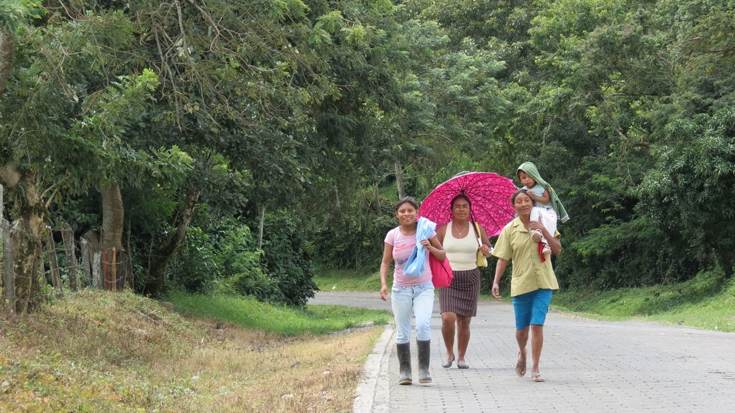It appears that this year, Latin America will no longer grow at the same pace as it did over the last decade. However, it will be the year when citizens will demand better services to boost their quality of life.
Clearly, one of the region’s most pressing problems is public insecurity. With only 10% of the world’s population, Latin America accounts for 30% of all homicides. This, together with other crimes, has grave consequences for individuals, but also for the region’s economies and development.
“Strategies for studying violence, to understand it and the methods for trying to evaluate it and explain what works and what doesn’t, are very similar to those used to understand other epidemics,” said epidemiologist Andrés Villaveces in this interview. Dr. Villaveces forms part of a team working to create a regional platform for exchanging knowledge and ideas on how to address the problem.
Some of these ideas are being put into practice, not only by governments and international organizations, but also by the perpetrators of violence. In Central America, one such example is the former gang members who are working to discourage other youth from following in their footsteps.
However, many experts believe that the emphasis should be on fighting inequality. This is a priority for Latin America, given that it is the region in the world with the greatest income disparities.
Inequality and informal employment
“An increase in inequality because the rich keep getting richer (rather than due to an increase in the percentage of the poor), which has contributed to rising homicide rates,” said economist Hernan Winkler, co-author of a World Bank study on inequality and violence in 2,000 Mexican municipalities, in this interview.
This is not an easy task given that around half of all jobs in the region are informal. Latin American countries face the daunting challenge of generating quality, formal employment.
The fight against poverty in the region has also enjoyed some successes, such as conditional cash transfer programs, in which the poorest families receive cash in exchange for sending their children to school and taking them for regular medical checkups.
One of the most successful of these initiatives, the Bolsa Familia Program in Brazil, managed to reduce extreme poverty by half. It serves as a model for the rest of the world.
Women, rights and equality
Women’s efforts have been crucial for reducing extreme poverty in the region. In fact, many Latin American women are abandoning more traditional roles to engage in what was previously considered “men’s work.”
Several women have undertaken initiatives to form small businesses to address and overcome the effects of violence in their lives and that of their families. With respect to women’s political participation, key efforts have been made to ensure that they have increasing access to decision-making entities.
Unfortunately, in Latin America, prejudices and stereotypes from the past remain and cases of harassment or street violence against women continue. Additionally, the rights of sexual monitories are often not respected, despite the enactment of several laws in their favor.
Innovation and education
Much remains to be done in the education field. Although there is widespread access to education in most of Latin America, the main challenge continues to be education quality, as demonstrated by the World Bank study, Great Teachers: How to Raise Student Learning in Latin America and the Caribbean.
Based on direct observation in schools, classrooms and of teachers in different countries of the region, the study concluded that Latin American students lose an average of one day of classes weekly due to teachers’ inefficient use of time.
However, the region has made some notable progress in this area, such as in Jamaica, where basic education coverage is nearly 99%; and in initiatives such as a private school in Mexico which students attend for free; as well as a school with thatched roofs in Costa Rica that has surpassed all attendance records.
In terms of innovation and new technologies, some countries of the region are exploiting their comparative advantages. For example, several Caribbean nations have taken advantage of the English-language skills of their populations along with the proximity to the United States to position themselves as allies in industries such as animation and software or videogame development.
The enormous penetration of smart phones in the region (almost all countries have more than one cellphone per inhabitant) is also an opportunity for young programmers to join forces with development experts to create technology tools to fight poverty.
Chikungunya and obesity
The increase in non-communicable diseases in the region is of growing concern for governments, who must add this burden to their already overwhelmed health systems. In Mexico alone, some six million people are obese or overweight, many of whom suffer from diabetes.
“The average number of calories we ingest in the region is on the rise and, in several countries, foods providing little nutrition account for a large percentage of calorie consumption in our diet,” said World Bank Health and Nutrition Expert María Eugenia Bonilla-Chacín in this conversation.
Another health concern is Chikunguña. In August, experts warned that the spread of this disease throughout Latin America would be difficult to control given that it is a relatively new illness, for which reason Latin Americans have yet to develop the necessary antibodies to fight it.
This means a major challenge for governments and their health systems, as along with uncertain economic effects.
Additionally, cancer, one of the leading causes of death in the region, disproportionately affects the poor, who have limited access to good doctors, lack the funds to pay for treatments, and do not have the possibility of taking time off to recover from the illness.
"Depending on the phase of the disease, patients may not be able to work and relatives may even have to quit their jobs to help care for them. In many cases, income declines, worsening the living conditions of these families,” explains David Oliveira de Souza, a World Bank health expert.

